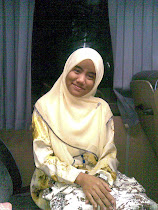1. First Neurons Created from ALS Patients


Researchers at Harvard and Columbia reported a milestone experiment in July, using a new method — one that doesn't require embryos at all — to generate the first motor neurons from stem cells in two elderly women with Lou Gehrig's disease, or ALS. The technique, developed by Kyoto University scientist Shinya Yamanaka in 2006, involves reprogramming a patient's ordinary skin cells to behave like stem cells, then coaxing them into the desired tissue-specific cells.
2. Inflammation vs. Cholesterol  Half of all heart attacks in the U.S. occur in people with normal cholesterol levels. Baffled? So were doctors. Smaller studies had hinted at the link in the past, but Ridker's recent research, showed that when people with normal cholesterol and high levels of CRP — a protein marker for inflammation in the blood — took statins, their CRP levels plummeted and their heart attack risk fell 54%. Compare that to the 20% reduced risk in people who take statins to lower cholesterol alone. Doctors say cholesterol and fatty plaques are still the main indicators of heart disease, but inflammation may be just as important, playing a key role as a trigger: It increases the instability of plaques, making them more likely to rupture, block heart vessels and cause a heart attack. ( inflammation is more dangerous..scary!! )
Half of all heart attacks in the U.S. occur in people with normal cholesterol levels. Baffled? So were doctors. Smaller studies had hinted at the link in the past, but Ridker's recent research, showed that when people with normal cholesterol and high levels of CRP — a protein marker for inflammation in the blood — took statins, their CRP levels plummeted and their heart attack risk fell 54%. Compare that to the 20% reduced risk in people who take statins to lower cholesterol alone. Doctors say cholesterol and fatty plaques are still the main indicators of heart disease, but inflammation may be just as important, playing a key role as a trigger: It increases the instability of plaques, making them more likely to rupture, block heart vessels and cause a heart attack. ( inflammation is more dangerous..scary!! )
3. Scarless Surgery
A team at the University of California at San Diego performed the first such appendectomy in the U.S. in March, using camera-fitted scopes to guide the removal of a woman's appendix through her vagina. The technique is also helping some gastric bypass patients whose stomach tissue has stretched out post-surgery; doctors insert a scope through the mouth and gather up the stretched folds to shrink the stomach back to a smaller size. The technique isn't completely incision-free — surgeons make small cuts through tissue inside the body — but by reducing incisions through the skin, it could reduce pain and infection and promote faster recovery for some common surgical procedures.
4. Genomes for the Masses
Now you can map your entire genome and reveal some of its many secrets — for just $399 and a little spit. Right now, there's no way to know whether you'll get cancer just because you have the gene, but once the science has advanced, the hope is that such genetic mining will predict disease, giving people the option of seeking treatment before they get sick. ( Isn't $399 is little?? I mean for the American. I thought it would be more expensive. )
5. New Genes for Alzheimer's
There is no cure, no vaccine and no way to diagnose Alzheimer's disease without an autopsy. But there may be hope in the discovery of 4 new genes that contribute to the most common form of the disease. The newly identified genes may shed light on how to keep those nerves alive, which may be a therapy for the Alzheimer's patient in the future. Even more exciting, one of the genes produces a protein that nerve cells use to communicate, another function that declines when Alzheimer's sets in.
6. A Five-in-One Vaccine
Any parent can appreciate how much babies hate shots. So, welcome Pentacel, the first vaccine to immunize against five diseases at once — diphtheria, tetanus, pertussis, polio and haemophilus influenzae type B. The vaccine was studied in more 5,000 infants, who showed only minor side effects, including fever, redness and swelling at the injection site. Pentacel still has to be administered in four separate doses, three times between the ages of 2 and 6 months, then again between 15 and 18 months — but it cuts down by 30% on the 23 injections toddlers under 18 months normally receive. ( These days, children are so lucky. )
7. Gene Screens for Breast Cancer
Gene screens are fast becoming a powerful tool, not just for diagnosing cancer but for treating it as well. Breast cancer patients are also increasingly relying o n another gene test, OncotypeDx, which can determine the risk of breast cancer recurrence and which chemotherapy agents will work best against a particular tumor. So that chemotherapy will not have lot s of side effects to the patient.
8. Blood Test for Down Syndrome
9. Seasick Patch for Cancer Patients
Those motion-sickness patches can really help calm a churning stomach on a boat. So, someone decided to apply the same idea to deliver anti-nausea drugs to cancer patients after chemotherapy. One smalll thing can give benefits to two different disease.
10. Stem-Cell Trachea Transplant


.jpg)
0 comments:
Post a Comment